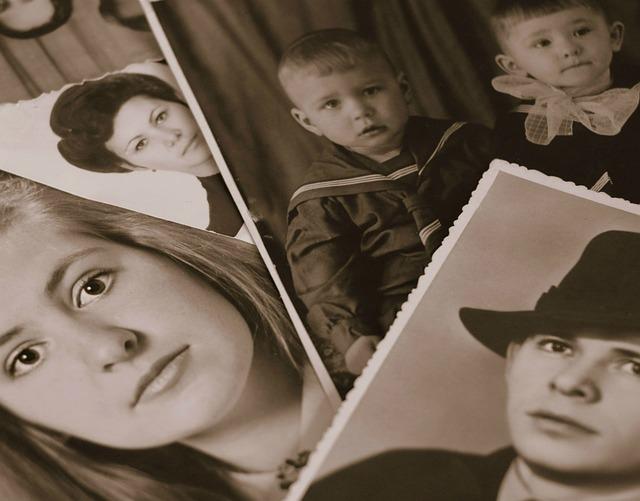In a world that often feels like it’s spinning faster than we can keep up, there exists a quiet power in pressing pause and looking back. Imagine, for a moment, a dusty old book nestled on a family shelf, its pages worn with time yet vibrant with stories that pulse with life. This is a family’s written history—a tangible tapestry of memories, triumphs, heartaches, and lessons learned. It whispers the tales of those who came before us, offering a bridge between generations and a compass for those yet to come. As we gather around our dinner tables, share holiday traditions, or simply linger in conversation, we are not just living our own stories but adding to a rich narrative that deserves to be captured and cherished. In an age where digital memories can vanish with a click, a written history stands resilient, a testament to our journeys and the bonds that unite us. Let us explore why every family should embark on this meaningful endeavor, creating a legacy that celebrates the past and illuminates the path forward with empathy and understanding.
Unearthing Roots How Family Histories Foster Connection
In the hustle and bustle of modern life, we often overlook the profound power that lies within our own family histories. These stories are more than just tales of ancestors; they are the threads that weave us together, grounding us in a shared identity. By delving into these narratives, we not only discover the struggles and triumphs of those who came before us but also gain a deeper understanding of our own place in the world. A written family history becomes a cherished heirloom, a beacon of connection across generations, helping us to feel rooted even as the world around us rapidly changes.
- Shared Identity: Understanding our lineage provides a sense of belonging and helps us appreciate the diverse paths that have led to the present.
- Lessons from the Past: Stories of resilience and perseverance offer invaluable lessons that can guide us through our own challenges.
- Stronger Bonds: Sharing these stories with family members fosters a deeper connection, enriching relationships with a tapestry of shared memories.

Bridging Generations The Power of Stories in Strengthening Bonds
Imagine a dusty old photo album tucked away in a corner of your attic. Now, picture it transformed into a vibrant tapestry of family narratives, each thread representing a story that connects one generation to the next. Written histories are more than just records; they are the heartbeat of family identity, a beacon that guides us back to our roots and forward into our future. When we take the time to document our family’s journey, we create a living legacy that fosters understanding and empathy across ages. It becomes a shared treasure chest, filled with anecdotes of triumph, love, and resilience that transcend time and space.
- Preserve Heritage: Capture the essence of cultural traditions and ancestral wisdom.
- Foster Connections: Strengthen relationships by sharing stories that resonate with all ages.
- Encourage Empathy: Promote understanding by highlighting diverse experiences and perspectives.
- Inspire Future Generations: Offer lessons and inspiration drawn from past triumphs and challenges.
In a world that’s ever-changing, a written family history serves as an anchor, reminding us of who we are and where we come from. It’s a gift that keeps on giving, one that nurtures bonds and fortifies the ties that bind us together, generation after generation.

Preserving Legacy Tips for Crafting Your Familys Narrative
Crafting your family’s narrative is a beautiful journey of discovery and connection. Begin by gathering stories from different generations, weaving together the colorful tapestry of your shared history. Start with conversations: sit down with grandparents, parents, and siblings to reminisce about the past. Listen intently and record their stories, paying attention to the small details that bring each memory to life.
- Photos and Letters: Dust off old photo albums and letters, using them as a springboard for deeper exploration into your family’s past.
- Heirlooms: Identify cherished heirlooms and ask about their origins and significance, as they often hold stories untold.
- Traditions and Recipes: Document family traditions and beloved recipes, capturing the essence of what makes your family unique.
As you compile these narratives, remember to approach the process with empathy and openness, recognizing the emotional weight that these stories may carry. Your family’s history is not just a collection of dates and events, but a rich tapestry of experiences, emotions, and lessons that deserve to be preserved for future generations.

Inspiring Future Generations How Written Histories Guide the Way
Written histories serve as a compass, illuminating the paths trodden by those before us and offering invaluable lessons to future generations. These chronicles are not mere records of dates and events but living narratives that breathe life into the past, nurturing a sense of identity and belonging. Through the stories of triumphs and trials, families can instill values and impart wisdom that resonates across time. By weaving together tales of resilience and innovation, they ignite a spark of inspiration in the hearts of the young, encouraging them to dream bigger and reach higher.
- Connecting Generations: A written history bridges the gap between the past and the present, fostering a deeper understanding of one’s roots.
- Preserving Traditions: It serves as a guardian of cultural heritage, ensuring that traditions are cherished and passed down.
- Empowering Youth: By learning from past experiences, young minds are empowered to make informed decisions and create a brighter future.
As each family pens its narrative, they contribute to a tapestry of human experience, a mosaic of stories that guide and inspire. In the pages of these histories, future generations find not only a reflection of their lineage but also a beacon of hope and possibility.


